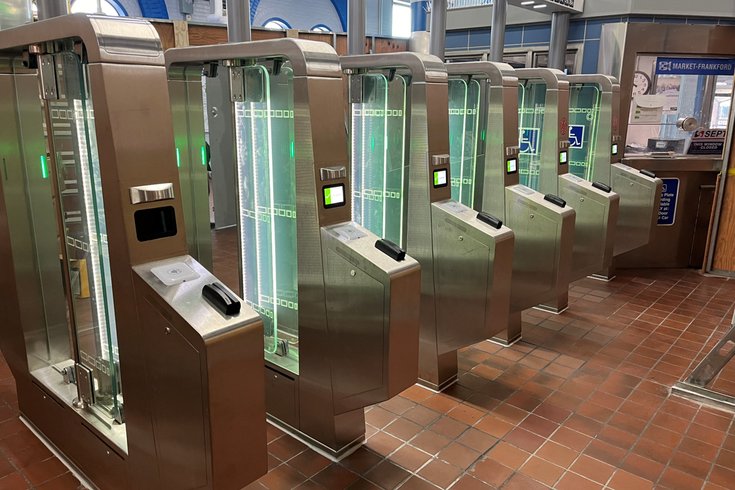
April 04, 2024
 Provided Image/SEPTA Media Relations
Provided Image/SEPTA Media Relations
SEPTA is testing taller fare gates at 69th Street Transportation Center in hopes of preventing fare evasion. The glass gates are 7 feet, 8 inches tall and are equipped with 3D imaging technology that can detect people who try to trail paying customers through the gates.
SEPTA is testing taller entry gates that are designed to curtail fare evasion.
At 7 feet, 8 inches tall, the glass gates are a far larger barrier than the mix of turnstiles used on the transit system – which people can leap over or crawl under to avoid paying. They can hold back 90 pounds of pressure and are equipped with 3D imaging technology that can detect people who trail or "piggyback" paying commuters through the gates.
SEPTA has begun installing 20 gates at 69th Street Transportation Center in Upper Darby, which serves the Market-Frankford and Norristown High Speed lines, as part of a $1 million test. The test phase will last three months.
"We need people to know that you must pay to get on SEPTA," SEPTA CEO and General Manager Leslie Richards said. She demonstrated the new gates Wednesday.
The gates were developed by Conduent Transport Solutions, Inc., who also implemented the SEPTA Key system.
Should the test phase prove successful, expect to see the new gates added elsewhere in the transit system.
"My wish is that we put it through the entire system," Richards told WHYY. "And when I say that, that would go through our subway system first. We would look at our trolley system second."
Richards said she wants to expand the program to six other stations, at a cost of $15 million. A wider rollout would cost $50 million.
By comparison, Richards said fare evasion costs SEPTA $30 million to $40 million each year. That's higher than the $22.9 million estimate SEPTA gave when it announced its plans for the new gates last year.
The rollout of the gates initially was to begin at the Market-Frankford Line's 13th Street and 34th Street stations. SEPTA spokesperson Andrew Busch said the first location was switched to 69th Street because it sees the most riders.
"We can test it at entrances to multiple modes (Market-Frankford and Norristown High Speedline), and we generally have more space to work with at 69th Street than at most stations, so for starting something like this, it helps minimize disruptions to riders," Busch said.